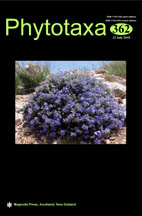Abstract
The closely related species of the genus Ficus with continuous variation have been confusing taxonomists, co-evolutionary researchers, and other related scientists. The boundary between species in the complex of F. auriculata, F. oligodon, F. hainanensis, F. beipeiensis, and F. variegata is still unclear. To clarify this problem, the nuclear loci ITS and G3pdh; chloroplast loci trnH-psbA, trnL-trnF, trnS-trnG, and psbK-psbI; and 15 pairs of SSR markers were used to reconstruct the phylogenetic relationship and clarify the species boundaries. The results of the present study indicated that F. variegata should be an independent species in Ficus sect. Sycomorus subsect. Neomorphe, which together with F. auriculata, F. oligodon, F. hainanensis, and F. beipeiensis compose a monophyletic group. The last four species of this complex are with small genetic distances, shared haplotypes, and overlapped geographic distribution, and should be treated as a single species.

